Span 61 cm / 24 in
Weight 46 g / 1.62 oz ready to fly
The concept:
- glider-like appearance
- conventional empennage
- detachable wing
- good flight characteristics
- few parts
- easy to build
- RPU 30
- two alternative wing shapes
- two different fin shapes
Name: Laidak is the Yiddish word for vagabond or prowler.
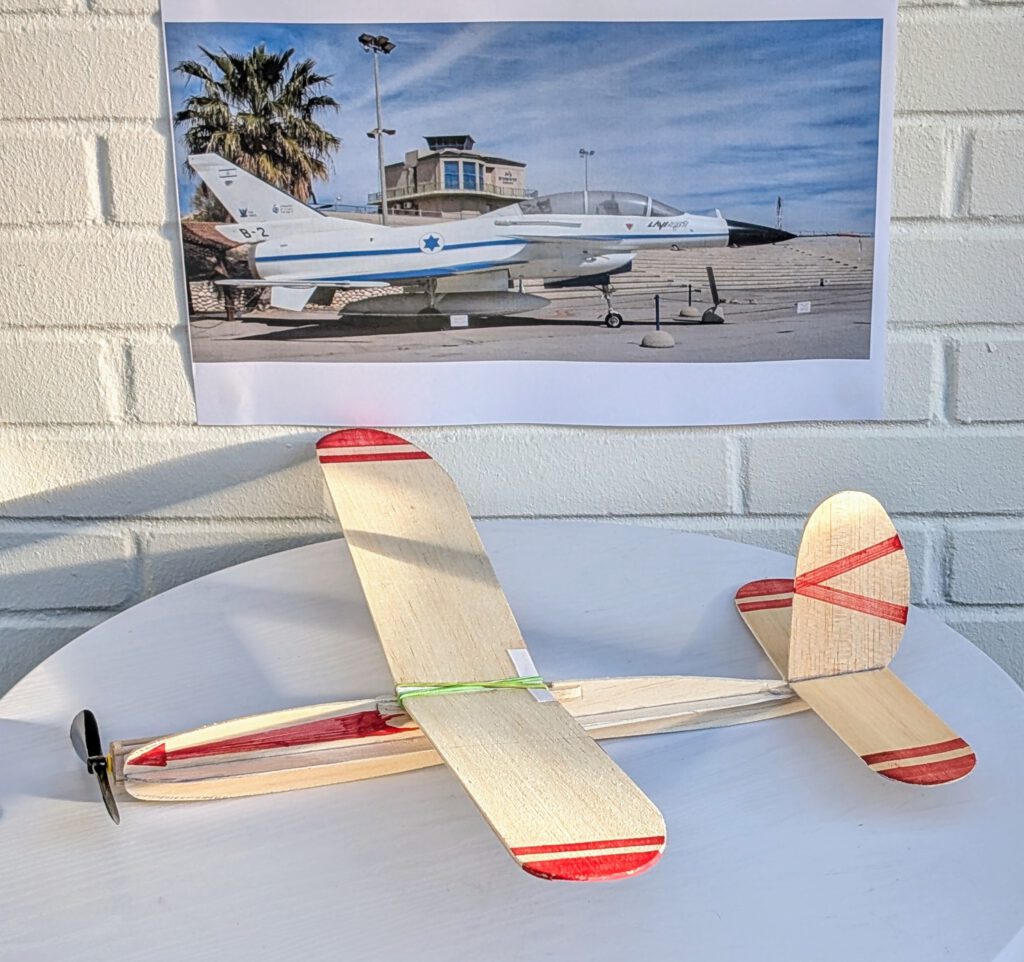
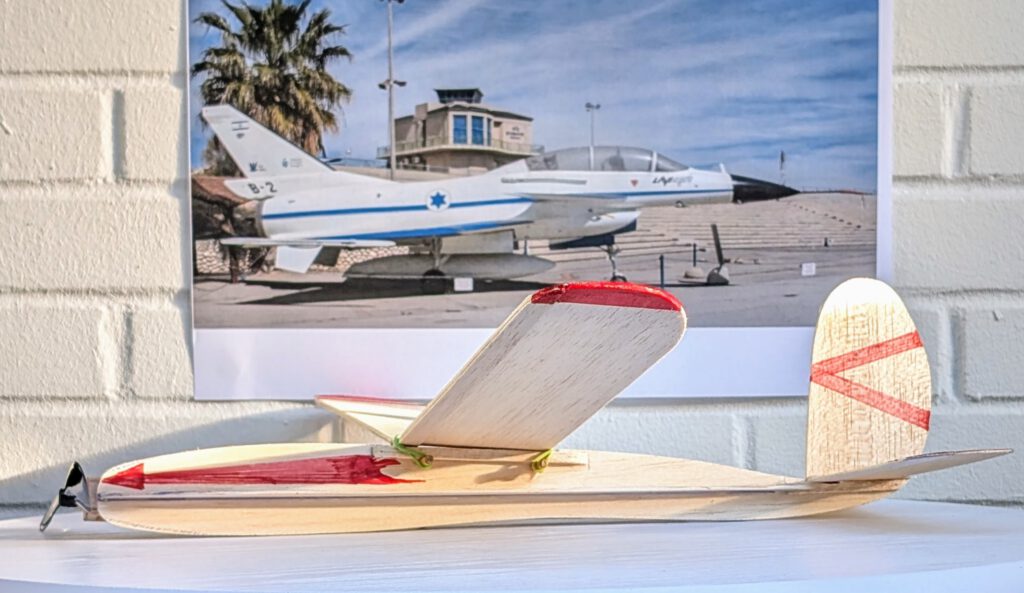
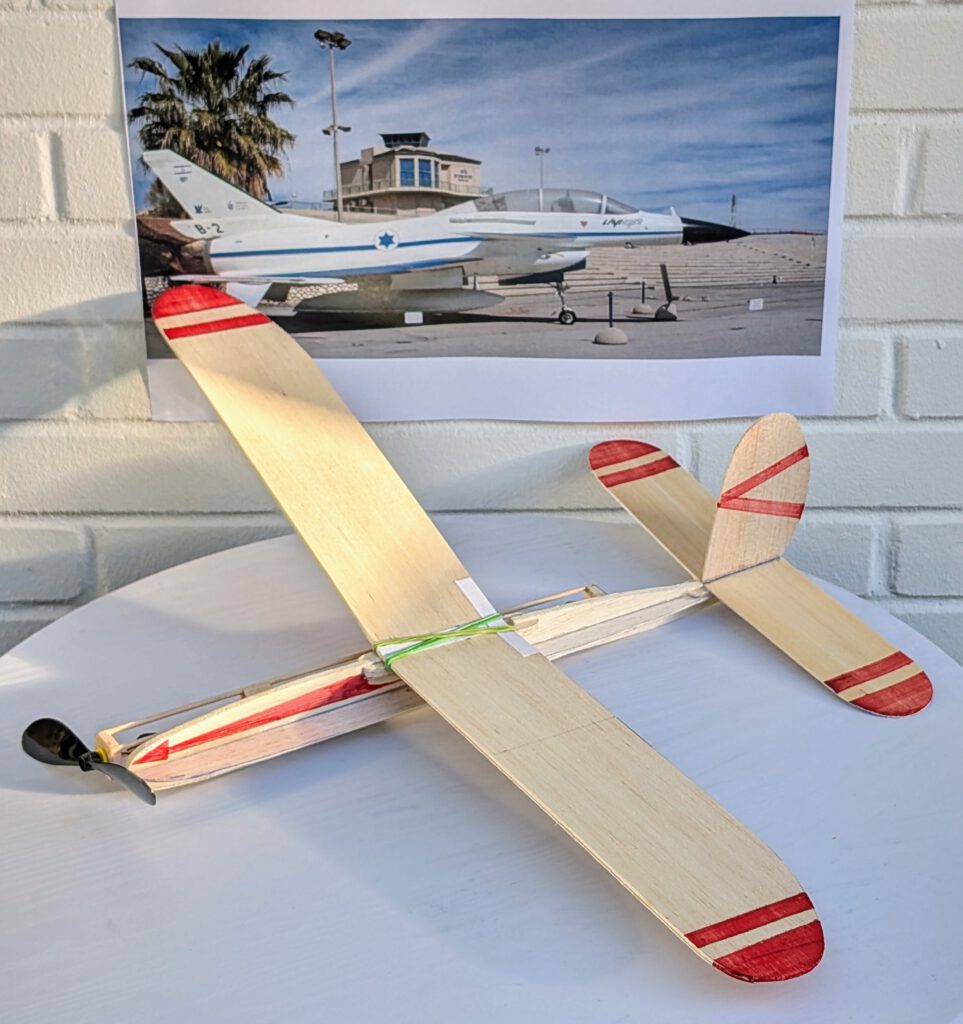
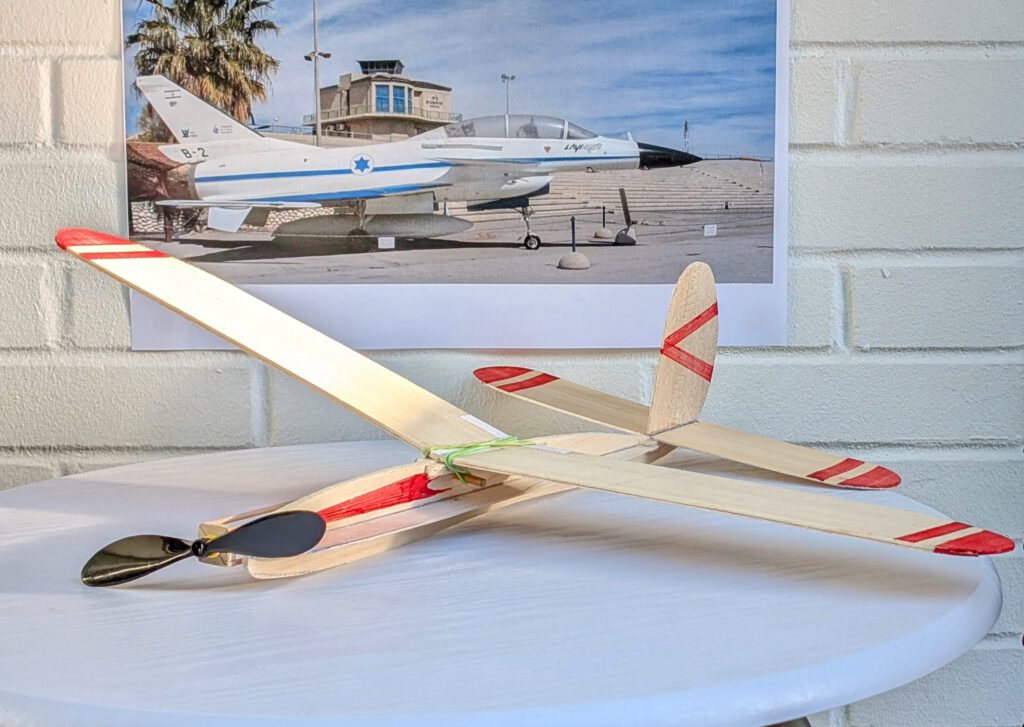
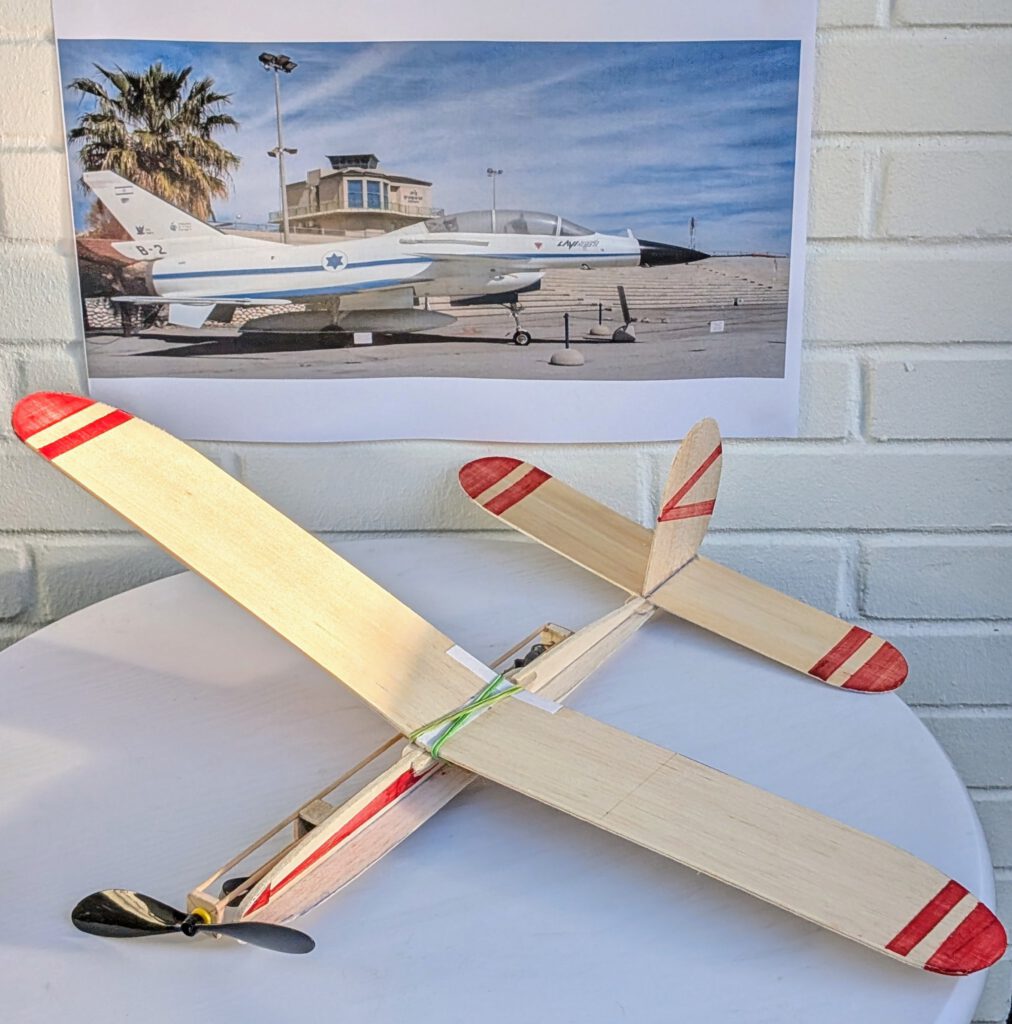
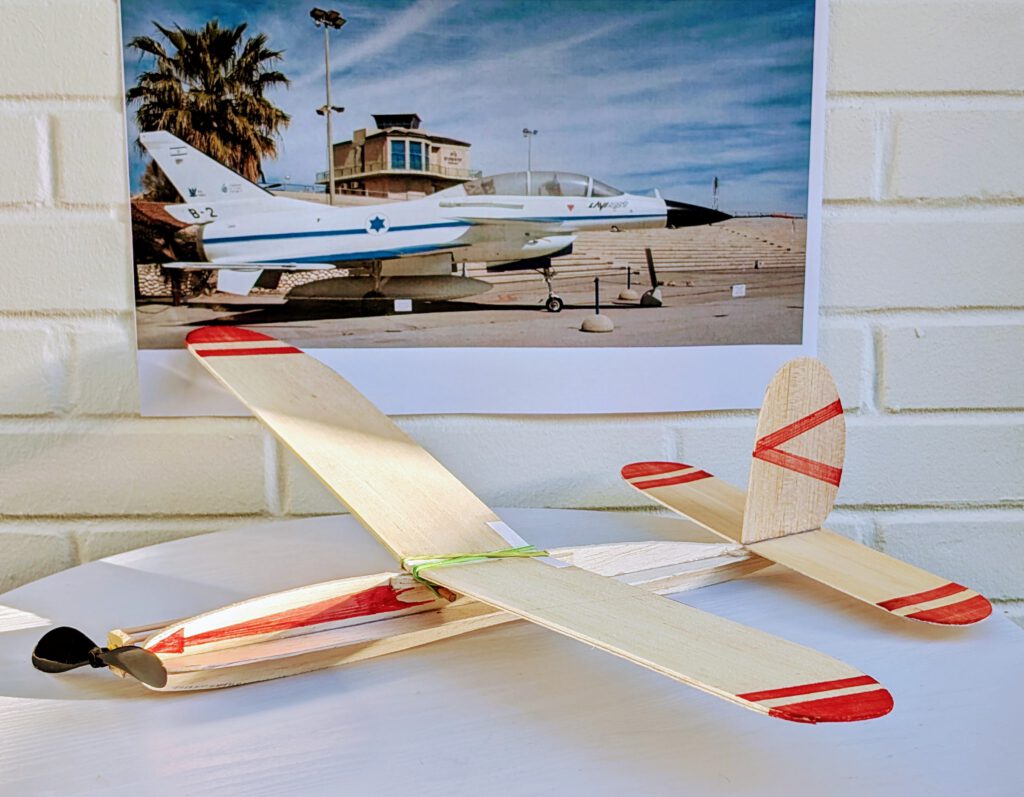
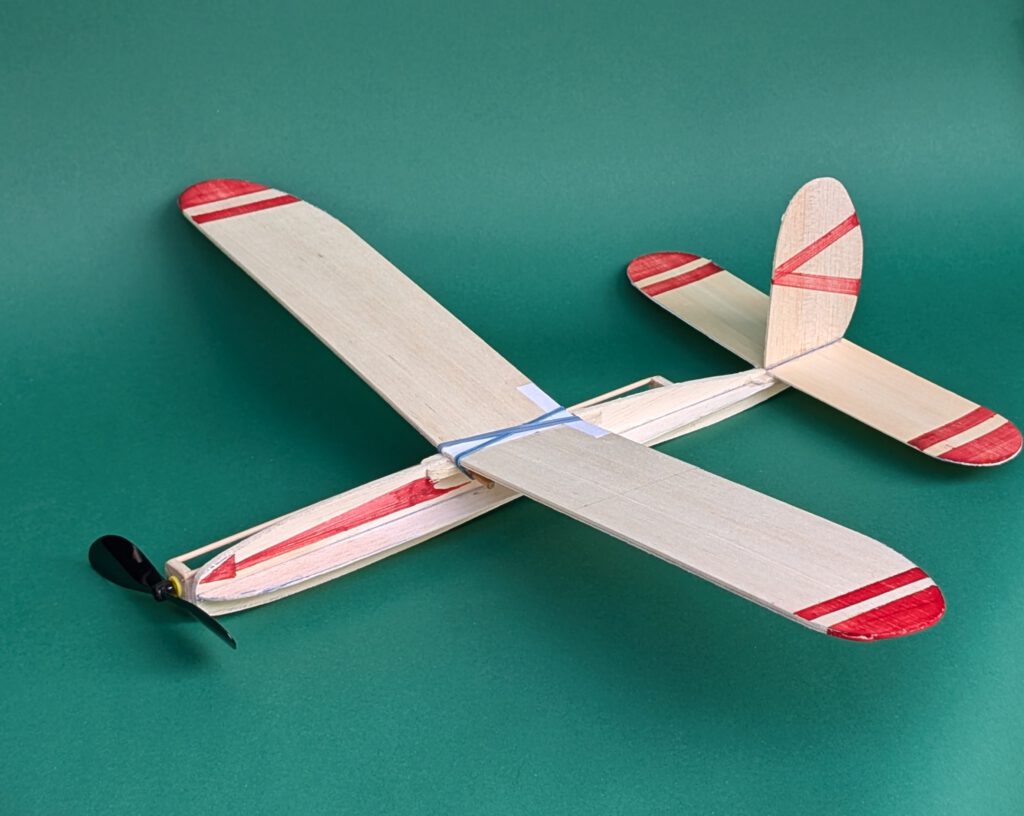
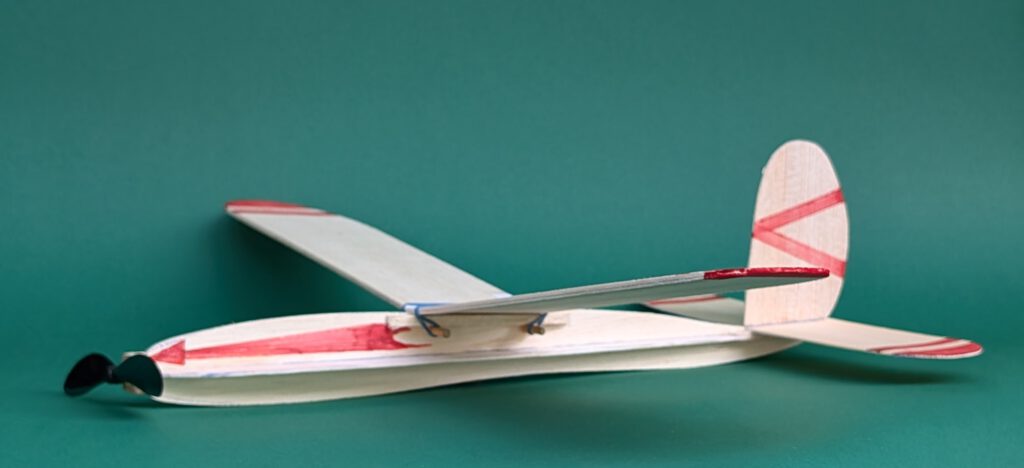
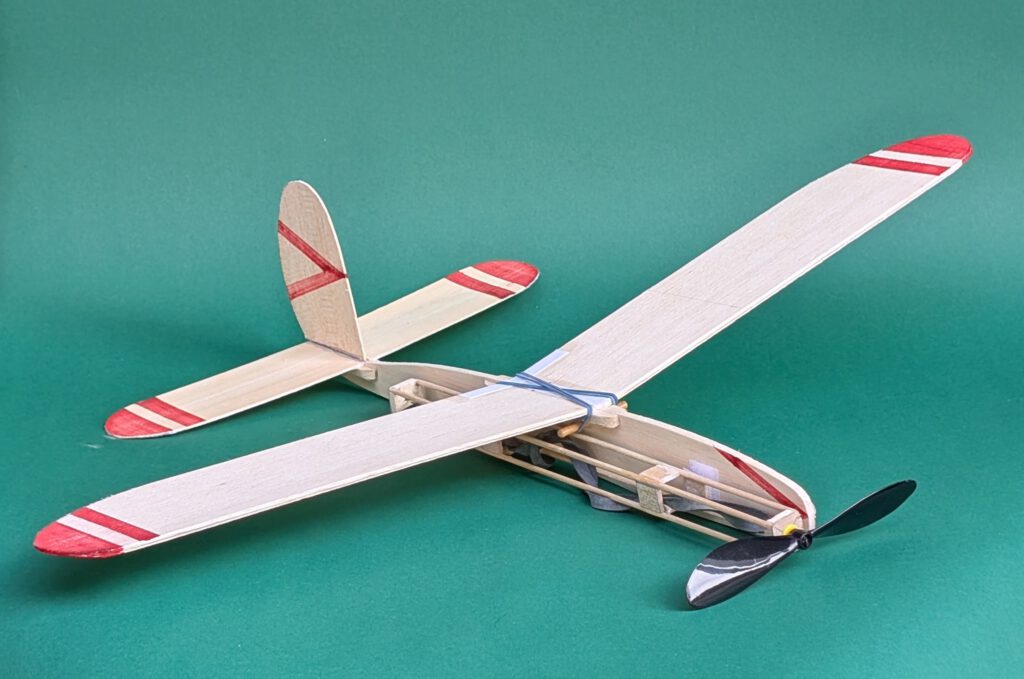

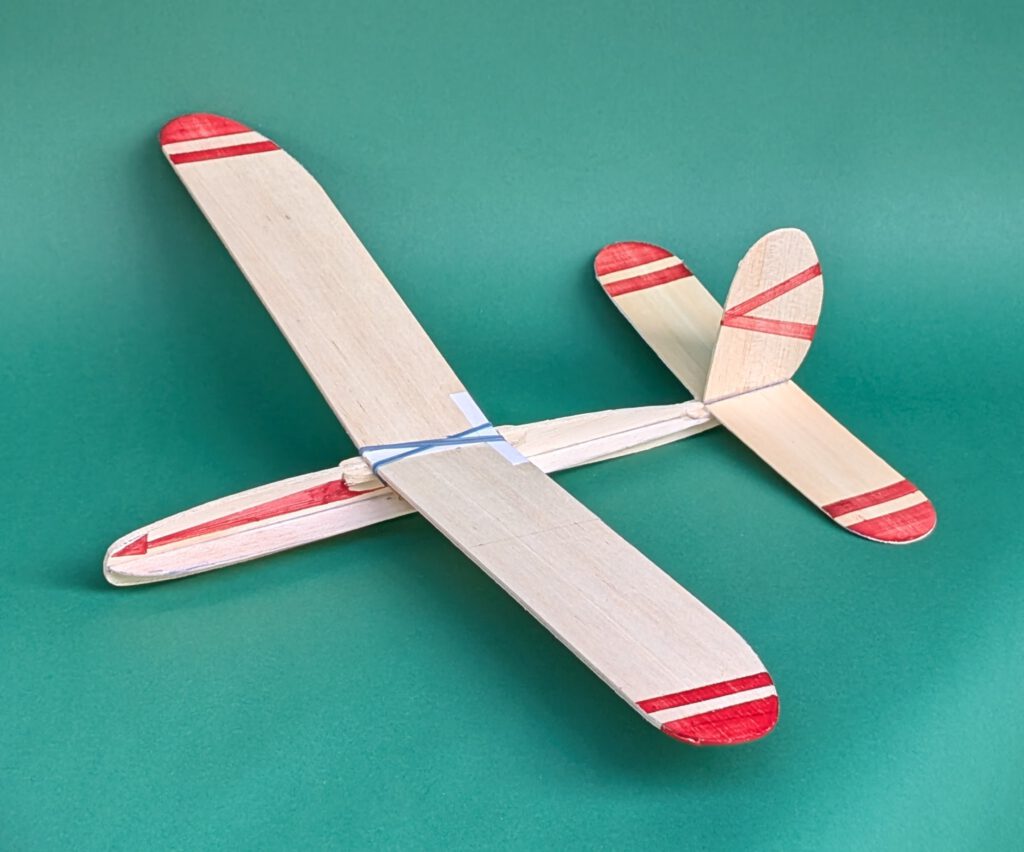
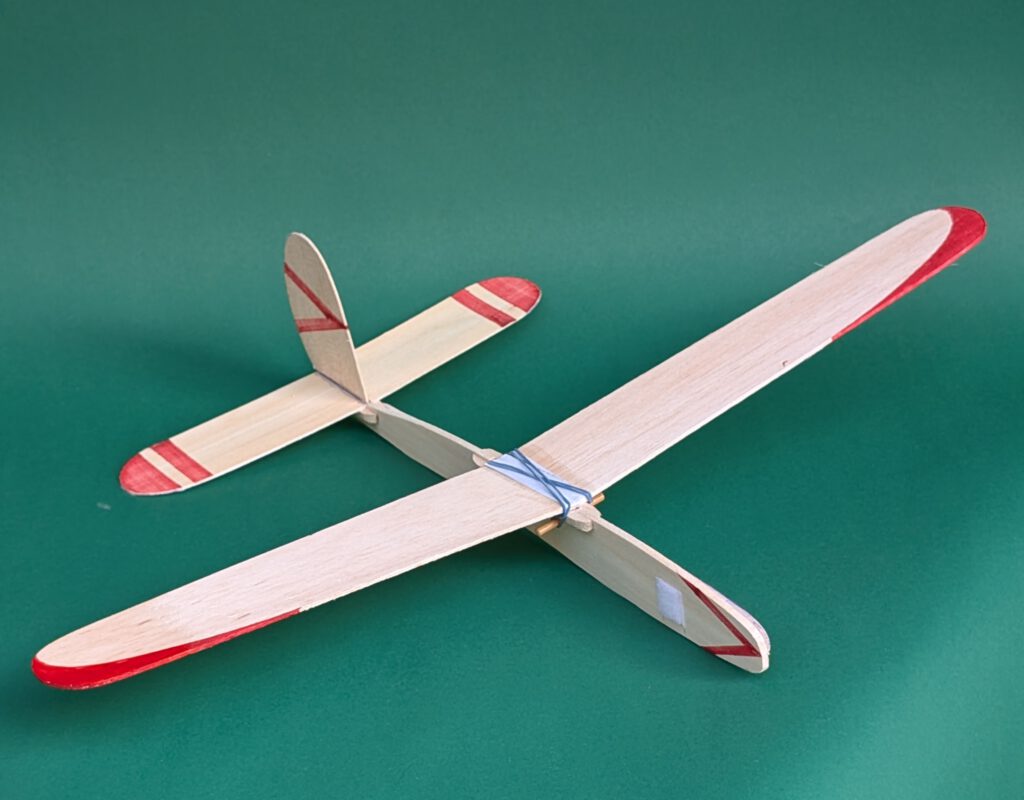

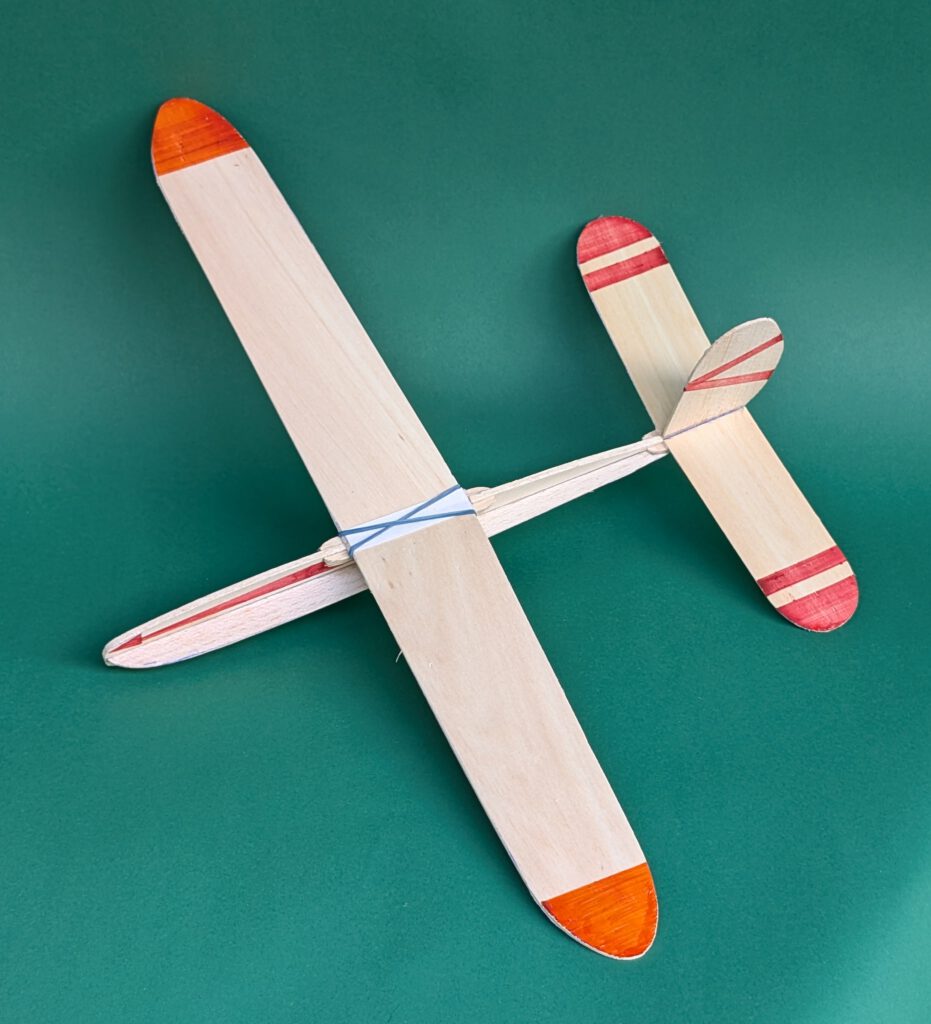
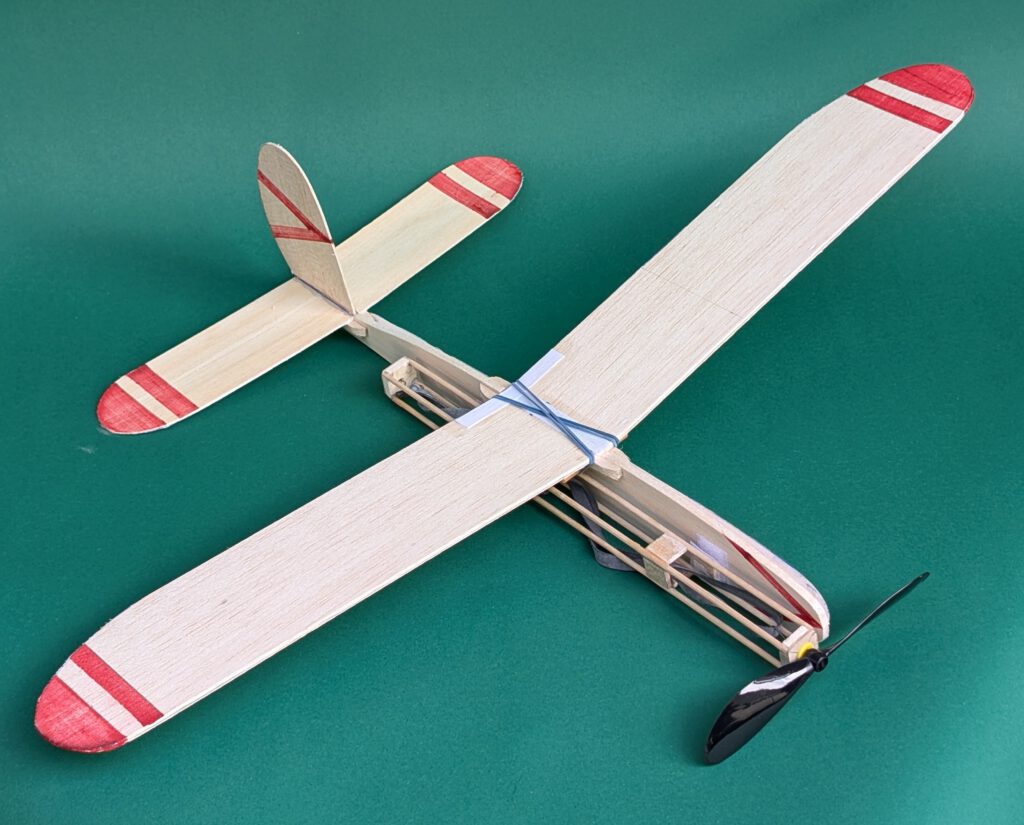
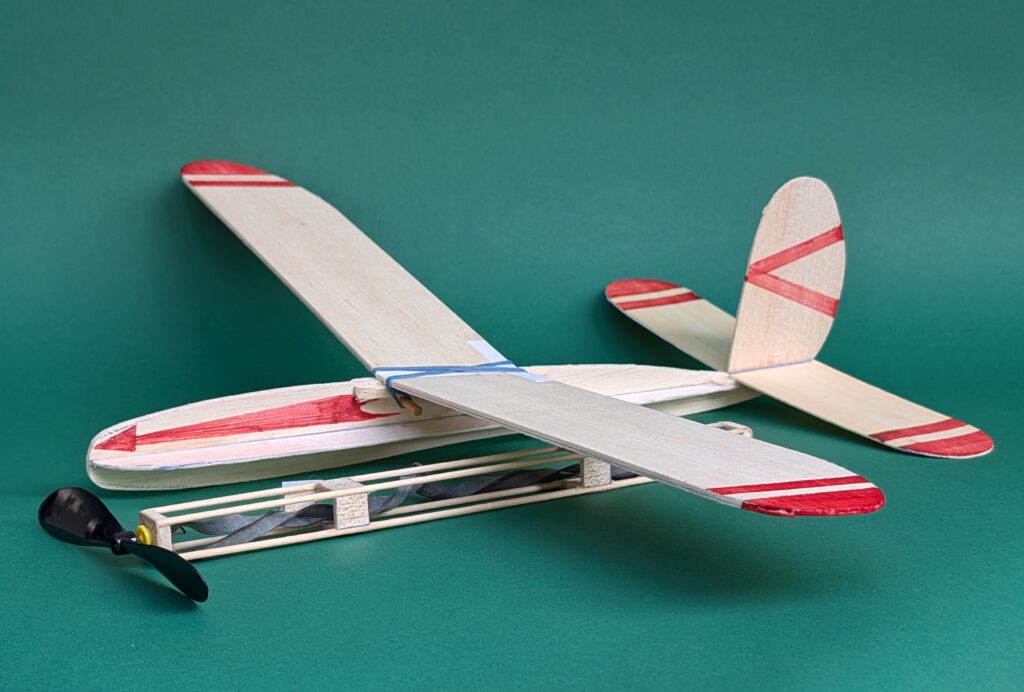
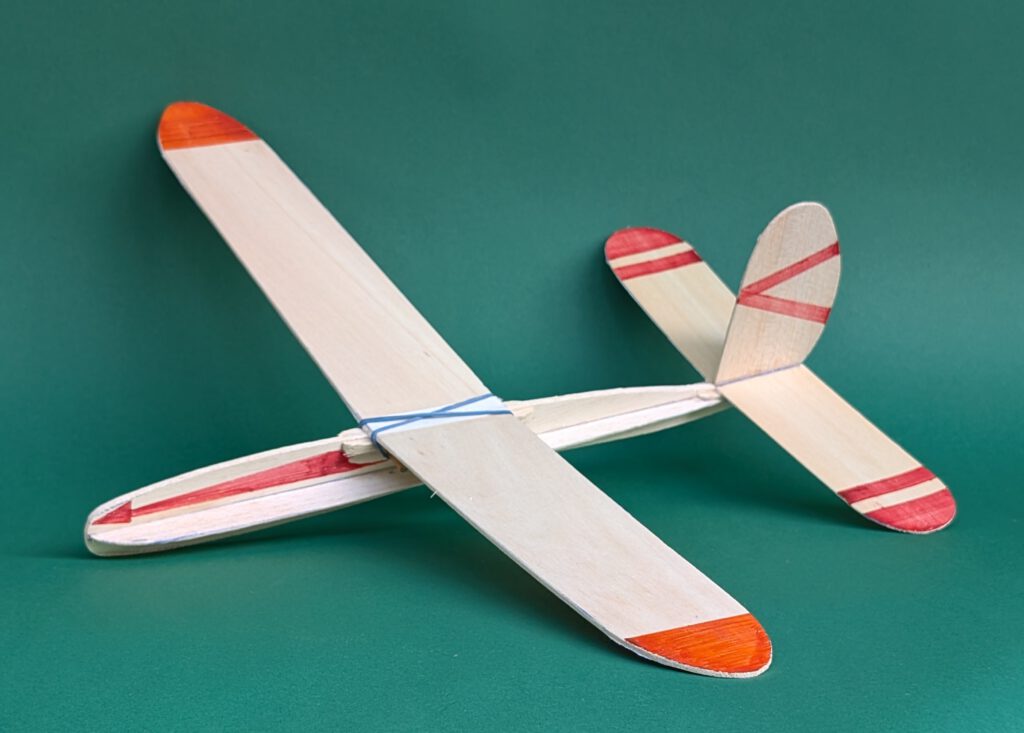
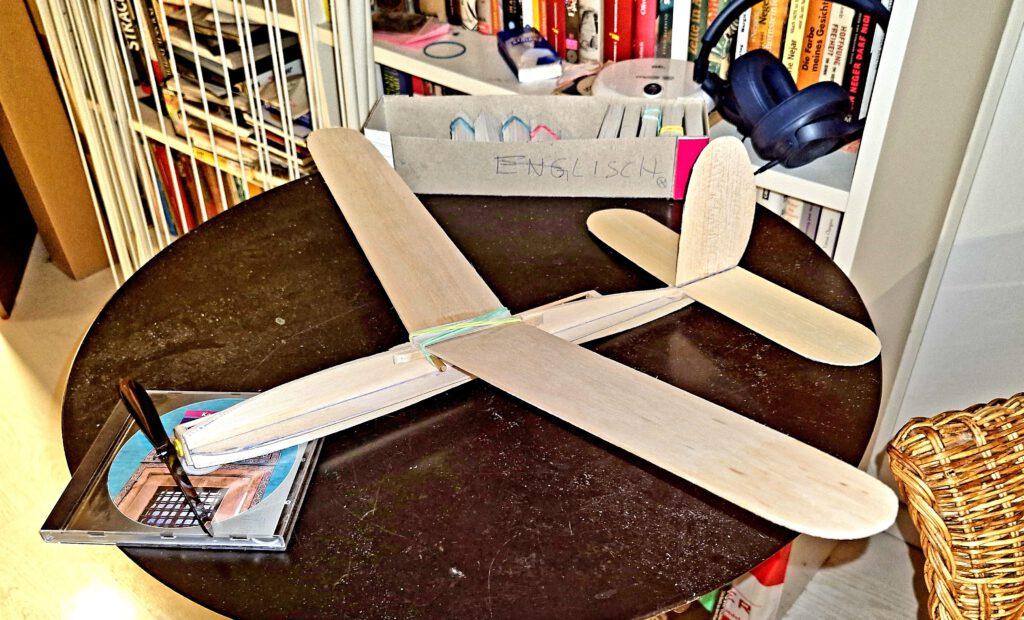
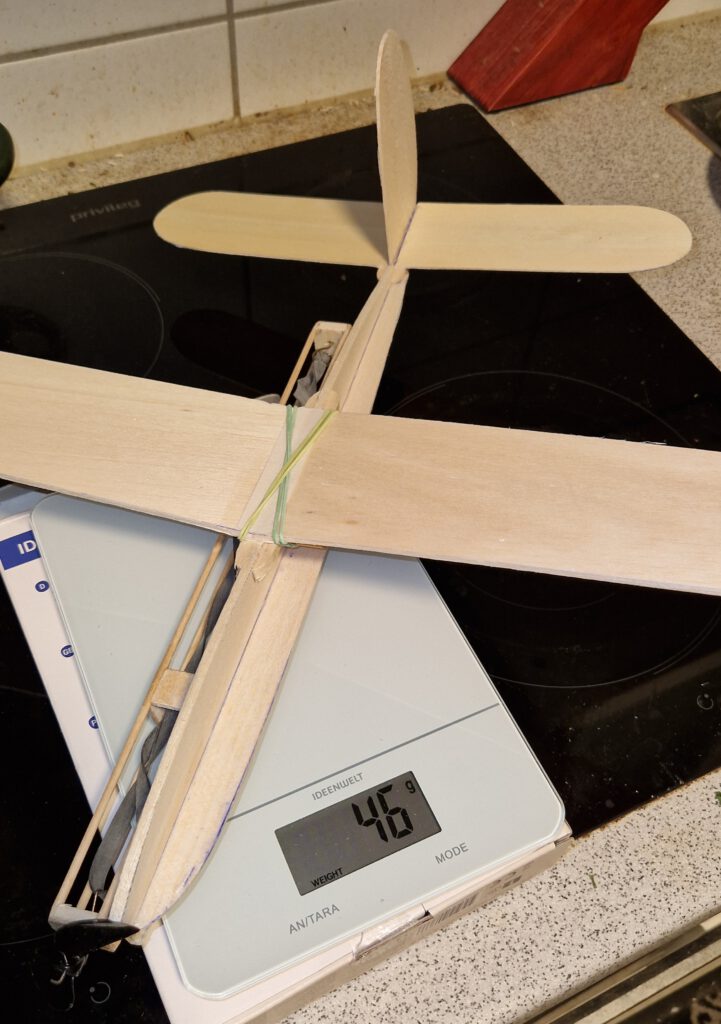
What is RPU?
RPU stands for rubber power unit.
This is a device designed for the modelbuilder who likes to fly many models with one only powerunit. Main material of the RPU comes from the grocery store around the corner: four barbecue skewer chopsticks. Add to them scratch balsa, a hook made from piano wire, some black rubber and a commercial plastic airscrew. That’s all.
The unit is attachable through two pieces of Velcro tape and can thus be used for example first on a little Spitfire five minutes later on a Mitsubishi Zero and ten minutes later on a Macchi Folgore of the same configuration. You build only one RPU and use it on as many modelplanes as you wish.
Models with RPU use the same asymmetrical principle as is known from No-cal models. From the one side they look handsome as from the other the power unit disturbs the harmonic view considerably.
Generally there is no great difference between the flight performances of a balsa sheet profile model with built-in rubber motor and a model flying on a RPU.
Why not try both principles? Among the plans range of beginner.zone you will find models of both categories. Sit down, build, fly, compare!
I developed and tested three different types of RPUs.
- The one for small models of 30 cm / 11.8 in to 40 cm / 15.75 in wingspan is the RPU 20 (lenghth 20 cm / 7.9 in).
- The one for medium sized models with a span of 40 cm / 15.75 in to 60 cm / 23.6 in is the RPU 30 (length 30 cm / 11.8 in).
- The one for larger models of up to 80 cm / 31.5 in wingspan is the RPU 40 (length 40 cm / 15.75 in).
- The RPU 40 is made from slightly different material. Instead of the skewer chopsticks it uses two strips of bamboo wooden sticks (400 x 9 x 3 mm). The rest is identical.
Building the balsa sheet model Laidak RPU.
Materials:
Fuselage: soft B 4; fuselage stiffener: B 1.5; wing: hard B 2; wing support: B strips 5 x 5; bamboo dowels: 5 diameter; horizontal stabilizer: B 1; fin: hard B 1.5; empennage support: B strips 5 x 5; linen band width 10 mm / ½ in; Velcro tape with adhesive backside; ballast: 10 g / 1/3 oz steel or lead.
Assembly:
Cut out balsa parts in accordance to plan. Sand well (photo). Mark position of fuselage stiffener on left side of fuselage part with pencil using a ruler. Mark positions of dowels on fuselage part. If coloring is desired do it now.
Fuselage:
Fix fuselage left side up with needles on building board. Cement wing support strip and empennage support strip into their respective places and let dry (photo). Continue with cementing fuselage stiffener on fuselage according to your markings. Hold in place with needles (photo).
Remove fuselage from building board and cement wing support and empennage support on right side. Let dry. Drill holes for bamboo dowels and cement them with ample glue in place. Let dry.
Wing:
Wing consists of a right and a left wing half. Reinforce both wing half leading edges or leading edge undersides with linen band as can be seen on photos. Let dry. Fix right wing half on building board with needles. Underlay left wing half tip in accordance to required dihedral. Join both halves and cover wing half joining area with linen band (photo). Let dry.
Cement a short piece of linen, around 5 cm or 2 in, at the wing trailing edge center area. This is where wing will later come in contact with rubber rings. Linen reinforced areas protect thin balsa from cracking.
If wing has the tendency to rest only on one side then it is too heavy on this side. To compensate the imbalance disperse an amount of white wood glue on the opposite wing half’s tip area. Do it if necessary twice until balance is obtained.
Empennage:
Reinforce leading edges of both horizontal stabilizer halves or leading edge undersides with linen band as shown on plan and let dry. Fix one horizontal stabilizer half on building board and cement other half to it without dihedral. Fix with needles. When dry cover joining area with ample glue and a piece of linen band. Let dry.
Don’t remove horizontal stab. from building board. Continue with fin. Align fin on center of horizontal stab, fix with needles at 90° right angle and cement (photo). Visual check symmetry from all sides. Let dry.
Final Assembly:
Put fuselage on so called “third hand”. Cement empennage on its supports using needles to hold in place. Doublecheck visually symmetry. Let dry.
Stick two pieces of Velcro according to your RPU on right fuselage side.
Next step is balancing your model. Fix wing with rubber rings on fuselage and install RPU. Start testgliding over tall grass. Add ballast according to your test results. Note given position of CG on plan.
Remember correct center of gravity (CG) is essential for successful flights.
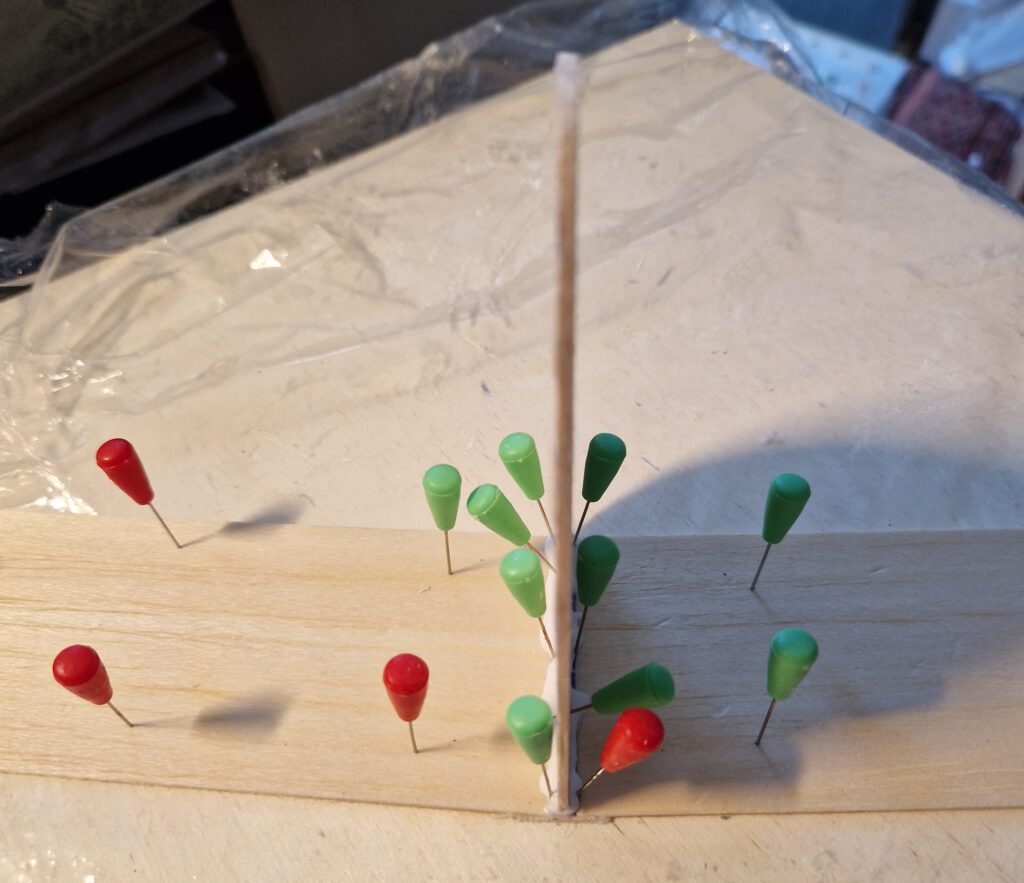
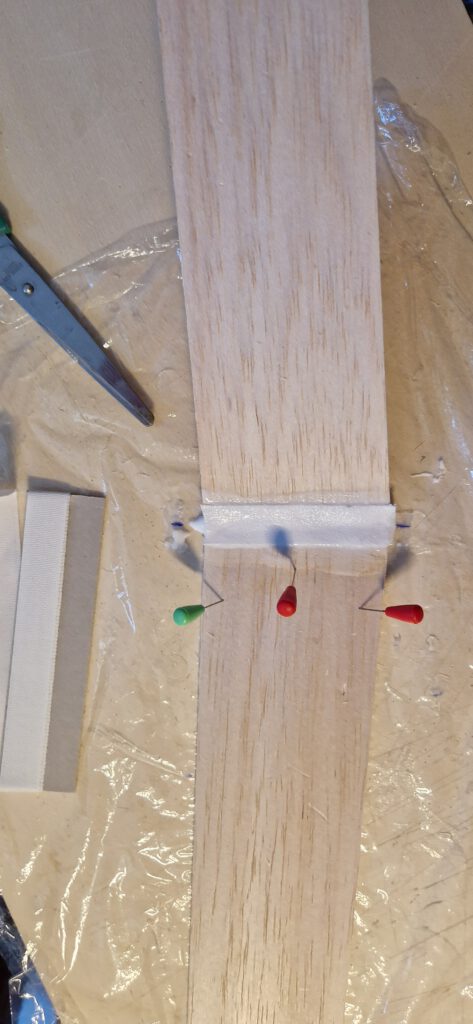
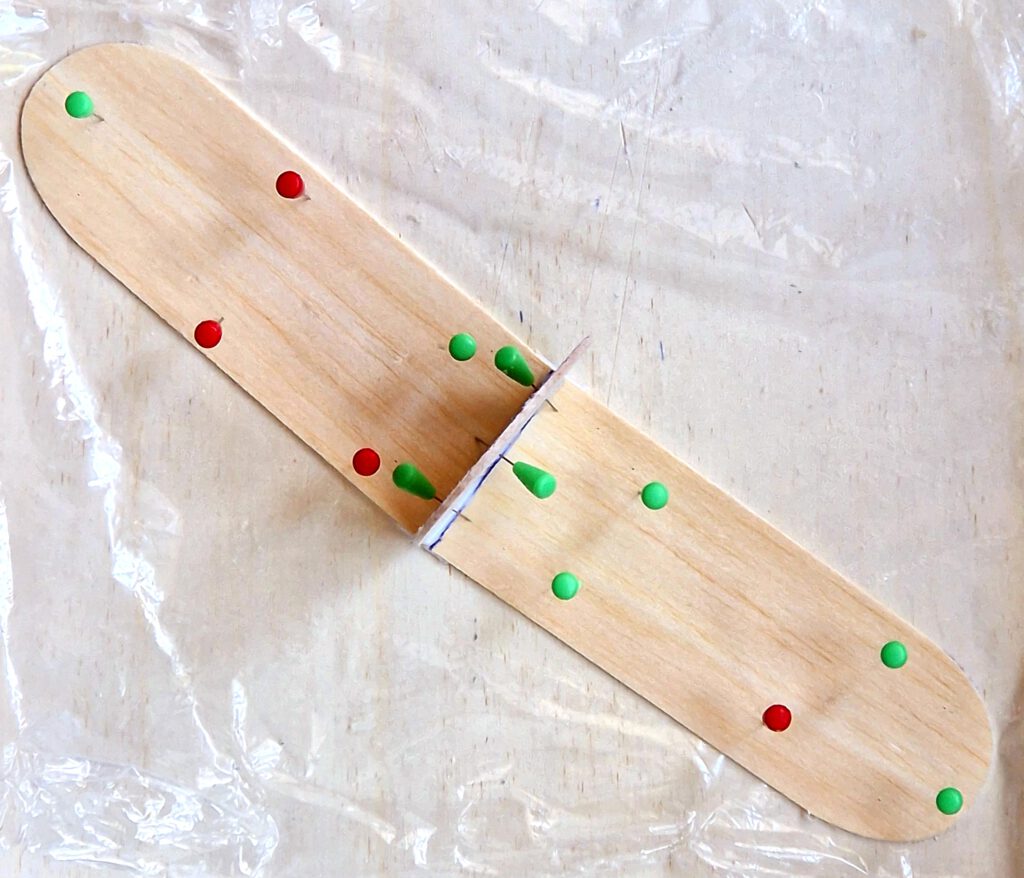
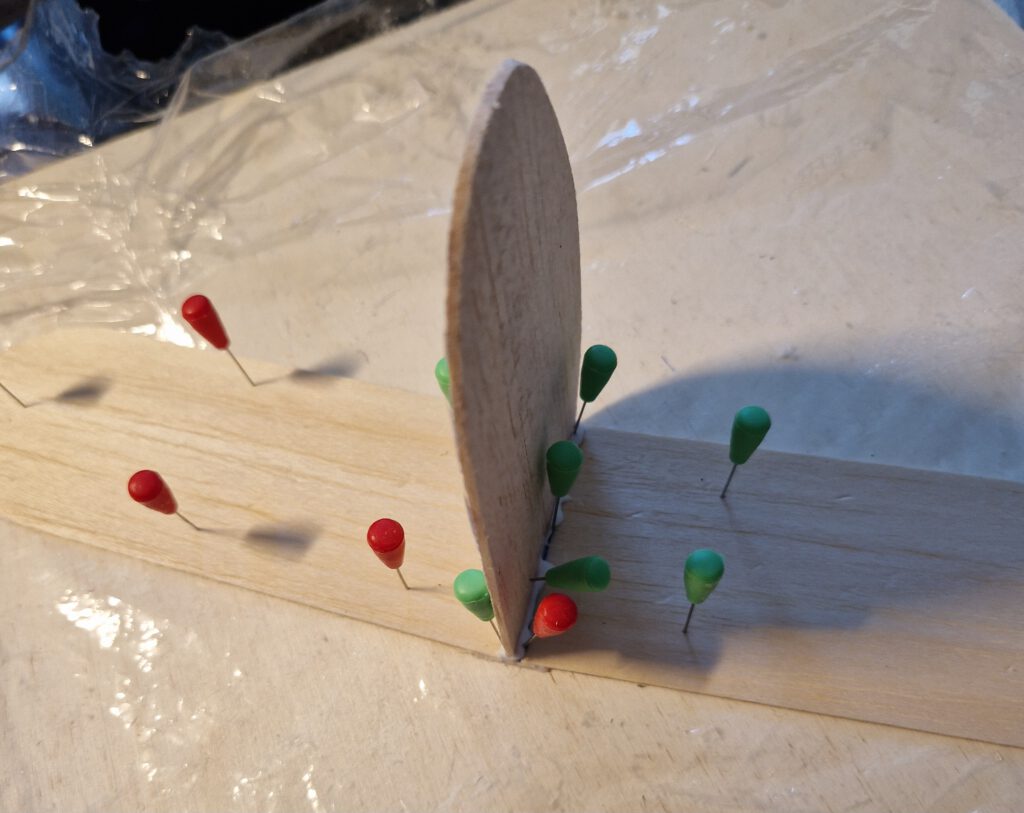
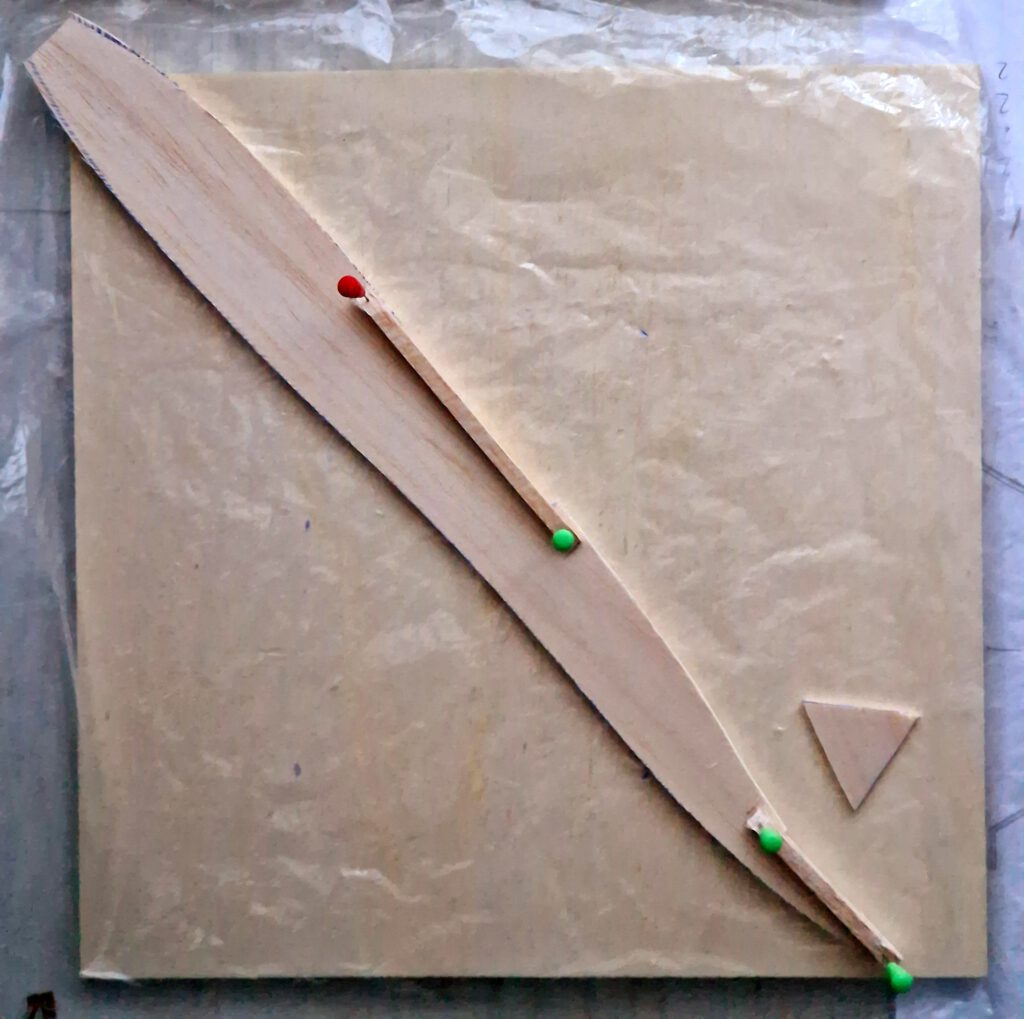
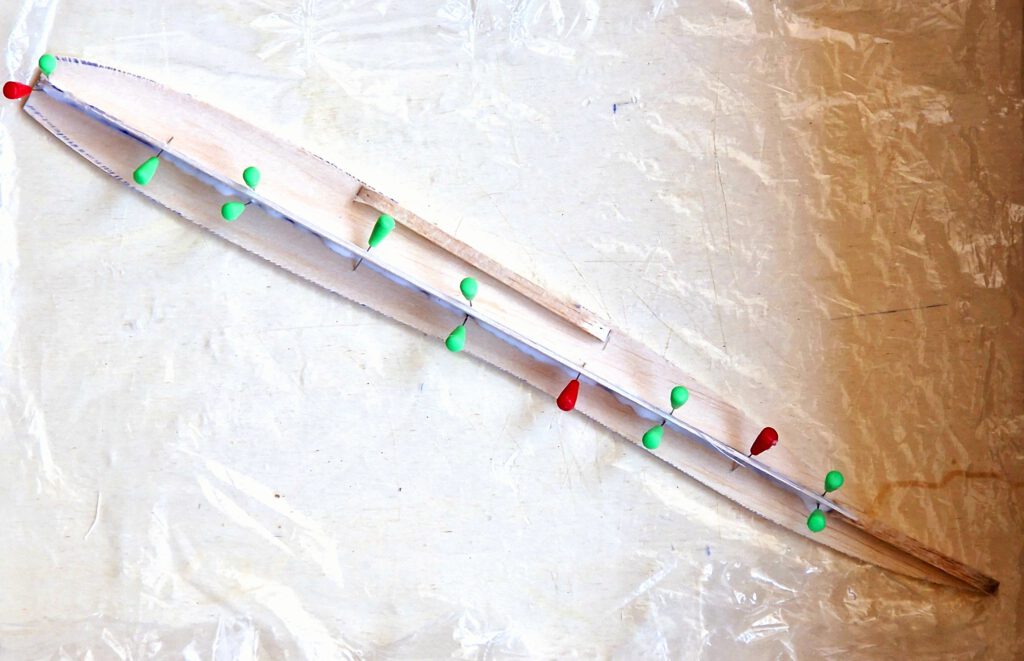
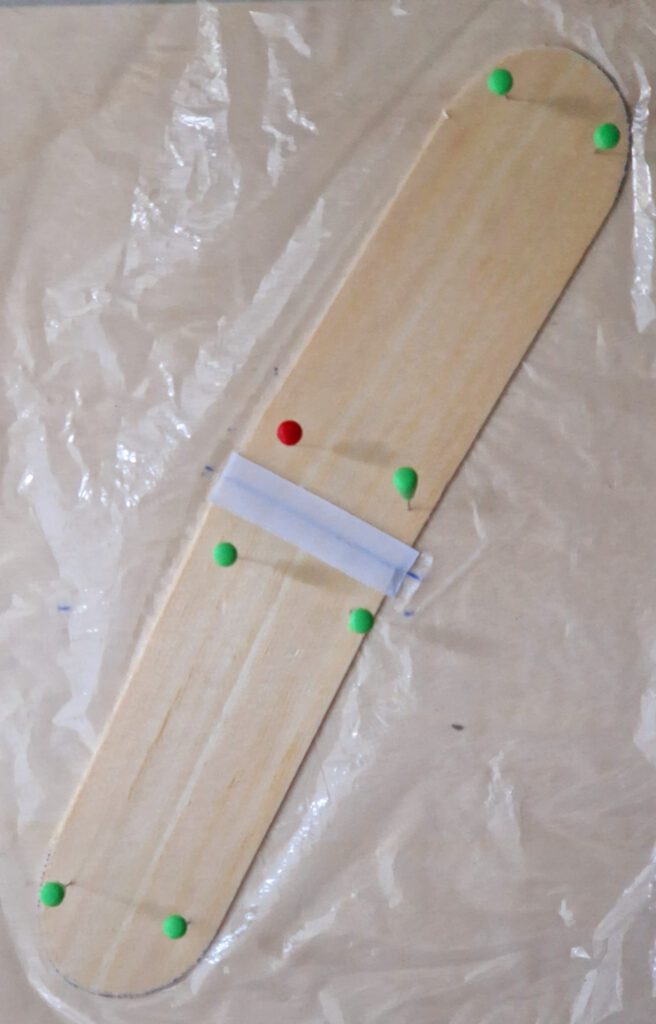
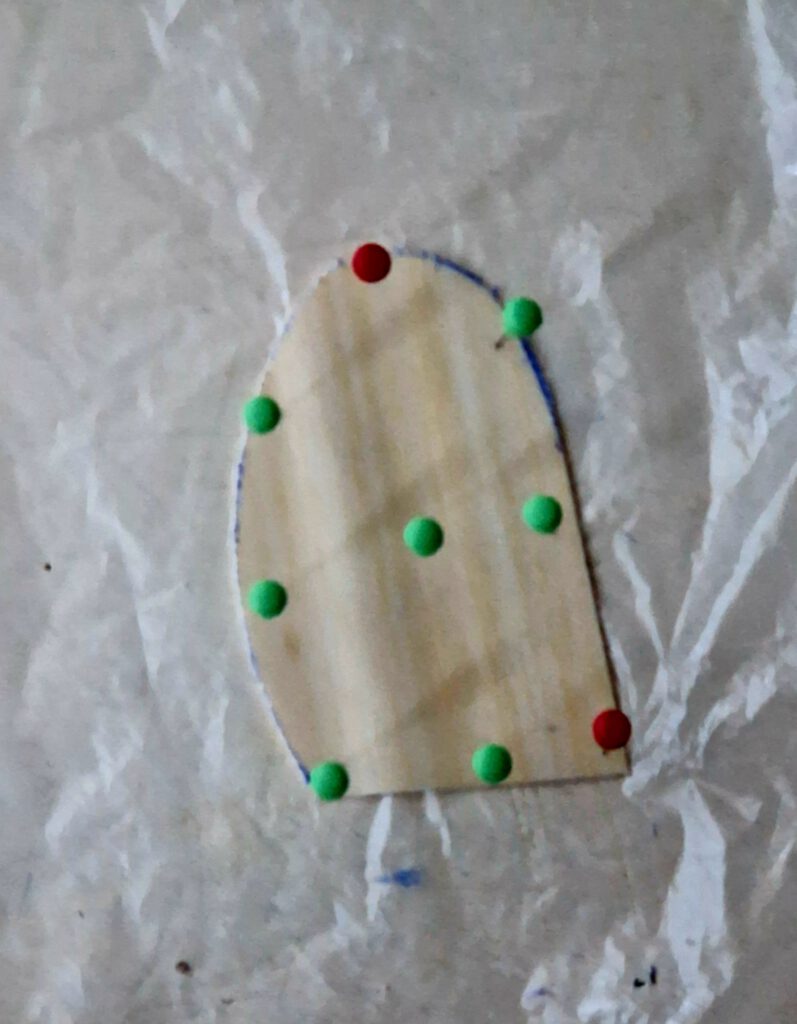
יש הרבה טיסות מוצלחות! (memiliki banyak penerbangan yang sukses!)

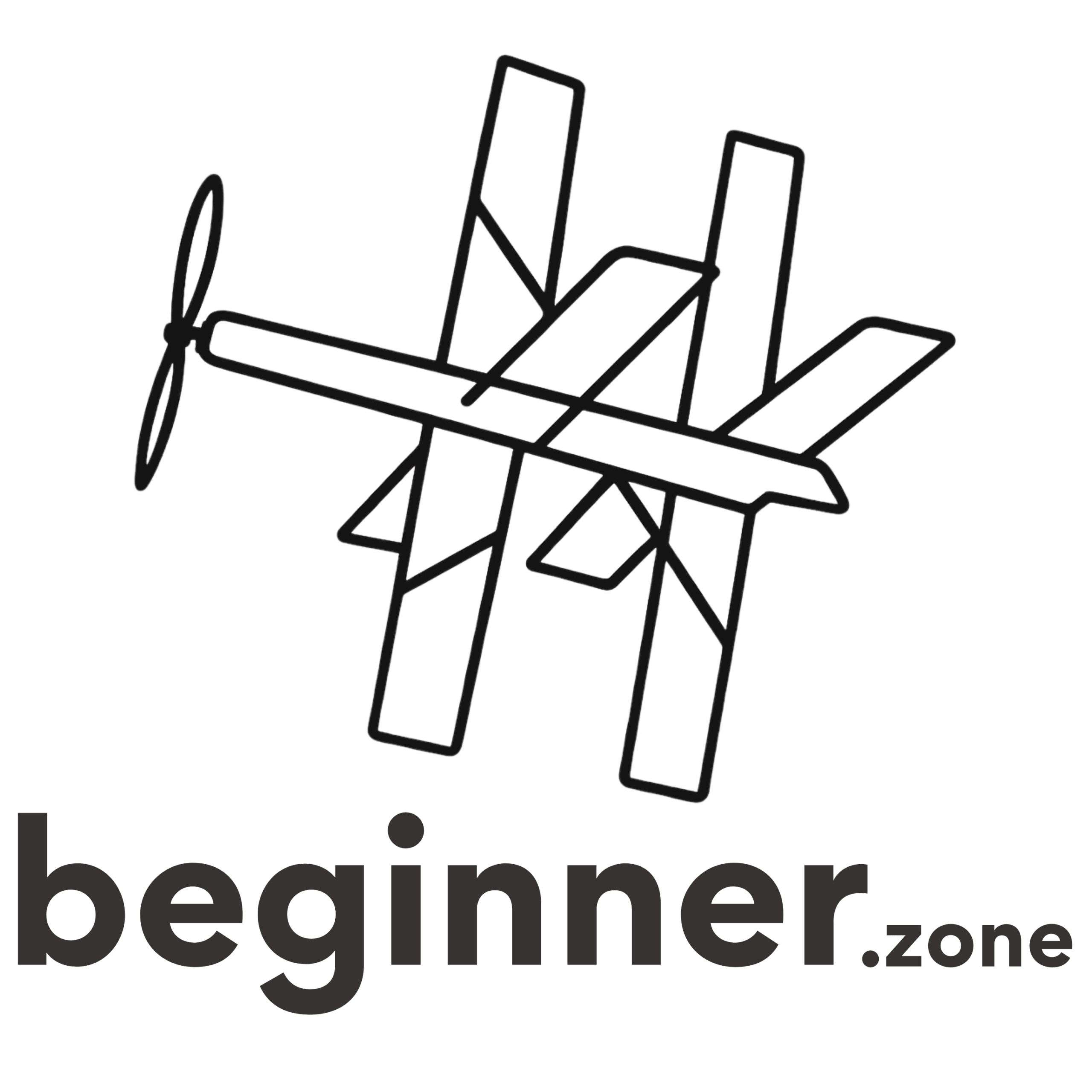
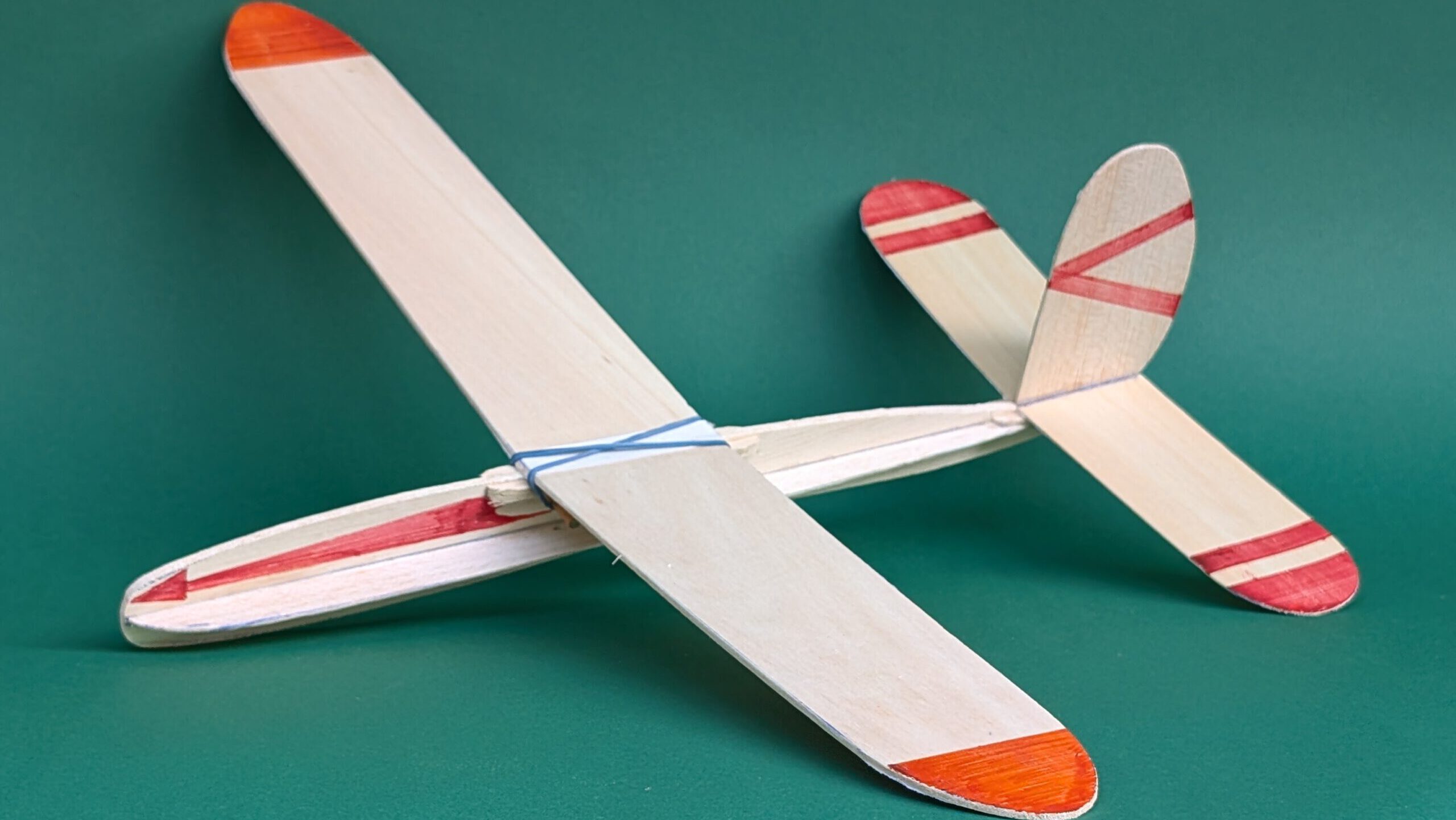
Leave a Reply